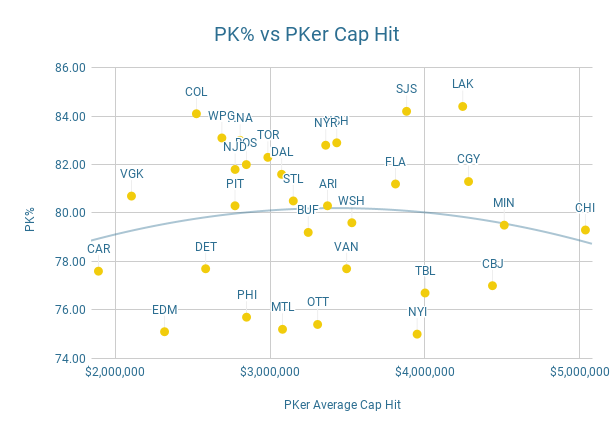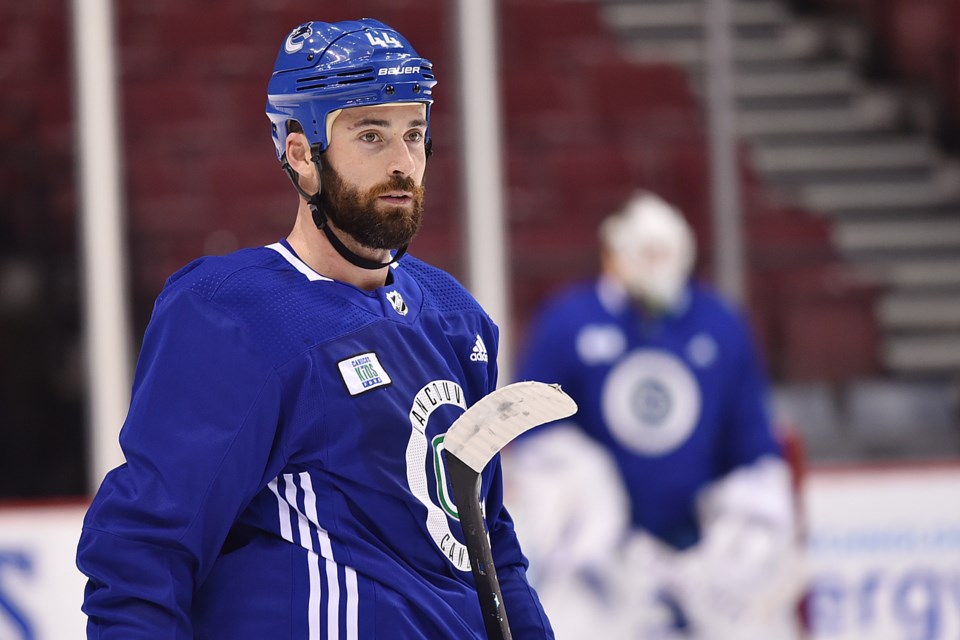I feel like many articles about the Canucks could start with the same lede: “The Vancouver Canucks are bad.” So I’m going to switch it up this time.
The Vancouver Canucks are not good.
One of the many areas in which the Canucks have not been good this season is the penalty kill. Their penalty kill percentage is 77.7%, placing them 22nd in the NHL. They’ve given up the fourth-most power play goals in the league: 56. The Canucks had a streak early in the year when they didn’t allow a power play goal in four straight games; they haven’t gone longer than two games without a power play goal against ever since.
It doesn’t help that their poor puck possession at even-strength has led to them taking a lot of penalties. The Canucks have been shorthanded for over 396 minutes this season, 9th most in the NHL.
Theoretically, even a terrible team that lacks skill can excel on the penalty kill, as it’s all about those attributes that coaches love to talk about: hard work, grit, and details. You don’t need to have silky smooth stickhandling to get into a shooting lane and block a shot, nor do you need to make a perfect outlet pass to clear a puck the length of the ice.
We can see that a little bit this season. The New York Rangers are going to miss the playoffs, but they have a top-10 penalty kill. The Arizona Coyotes, even with their late season surge, are going to finish in the basement of the NHL, but they have a league-average penalty kill. Meanwhile, the Tampa Bay Lightning are one of the best and most skilled teams in the league, but they’ve allowed as many goals as the Canucks on the penalty kill and have a worse penaly kill percentage.
But I wanted to look at the penalty kill from another angle. The Canucks have a few players on the roster who have been paid a premium partly because they can play on the penalty kill. I’m thinking of Loui Eriksson, Brandon Sutter, and Erik Gudbranson, but this obviously also goes for any player who can “play in all situations,” like Alex Edler and Bo Horvat.
How does the Canucks’ penalty kill spending compare to the rest of the NHL? Do they pay their typical penalty killers more or less than average? Does penalty kill spending correlate in any way to success on the penalty kill?
To look at this, I took all the players who have played at least 80 minutes shorthanded this season and looked at their cap hit. I used the 80-minute cutoff as this gave me an average of 8 players per team, which seemed like an appropriate chunk of players to consider as a team’s “usual” penalty kill.
Then I took the average cap hit of those penalty killers and put it in this handy dandy chart:
What we see at the top of the chart are the teams who have “star” players that also play on the penalty kill. The Chicago Blackhawks have Jonathan Toews and his $10.5 million contract skewing their average way up, along with the $6 million Brandon Saad and high paid defenceman Duncan Keith and Brent Seabrook.
Minnesota, meanwhile, has Ryan Suter and his ~$7.5 million contract, Mikko Koivu’s $6.5 million contract, and Jared Spurgeon and Mikael Granlund, who both make over $5 million.
At the other end is the Carolina Hurricanes. Jordan Staal, with his $6 million contract, is the only one of their usual penalty killers this season that makes over $3 million per year. They have penalty killers on entry level contracts or cheap deals befitting bottom-six forwards and bottom-pair defencemen.
Meanwhile, the Vegas Golden Knights have a wealth of cheap players with bottom-six and penalty killing experience to choose from, including Tomas Nosek making a league minimum salary, and cheap defencemen Brayden McNabb and Deryk Engelland.
So, where do the Canucks fit?
They’re above the NHL average, but not by that much, sitting 11th in the league with a $3,494,444 average cap hit among their top eight penalty killers this season. Loui Eriksson is the highest paid among them at $6 million, then Bo Horvat at $5.5 million. Their cheapest two penalty killers are Markus Granlund ($900k) and Troy Stecher ($925k).
Perhaps one difference is that the expensive penalty killers on the Canucks are not typical star players like we see from the Blackhawks and Wild. Horvat fits the bill, perhaps, but Eriksson and Sutter are not.
Is there any correlation between spending and success on the penalty kill? Not really, no.

There are very good penalty kills that rely on highly-paid star players, like the Los Angeles Kings with Anze Kopitar and Drew Doughty. There are also very good penalty kills that depend more on role players and young players on cheaper contracts, like the Colorado Avalanche.
The reverse is also true. The majority of the Columbus Blue Jackets’ penalty killers make over $4 million per year, but their penalty kill percentage is terrible. At the other end, the Carolina Hurricanes also have a terrible penalty kill with their mix of role players and youth.
Interestingly, both the Blue Jackets and Hurricanes avoid the problem by avoiding penalties: they’re 30th and 31st in the NHL in total shorthanded ice time this season.
So, what we see in this pretty cursory glance is that the Canucks’ spending on their penalty killers isn’t unusual and that there doesn’t seem to be a huge difference between the teams that use star players on the penalty kill and those that don’t.
One thing that’s not included in this is goaltenders and there’s no doubt that goaltending has played a big role in the Canucks’ penalty kill problem. Their .838 save percentage while shorthanded is fourth worst in the NHL. But more than in any other game situation, save percentage on the penalty kill is impacted by the play of the players in front of the goaltender. That’s a topic for another day, however.



